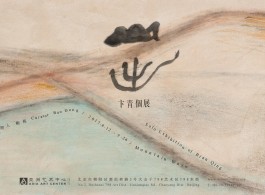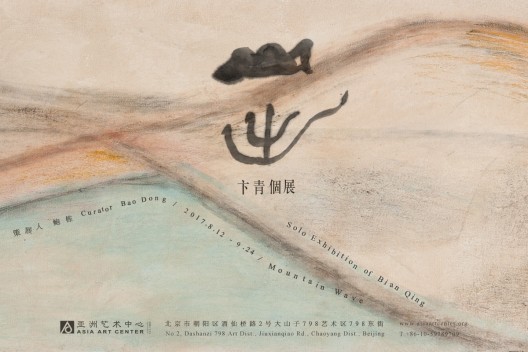Asia Art Center, Beijing
Artist Bian Qing
Curator Bao Dong
Date 2017.8.12 – 9.24
Opening 2017.8.12 (Sat) 3:00pm
Organizers Asia Art Center (Beijing)
Venue Dashanzi 798 Art District, No.2, Jiuxianqiao Rd., Chaoyang District, Beijing
Asia Art Center(Beijing) will be held the exhibition “Mountain Wave: Solo Exhibition of Bian Qing” from 12th August to 24th September, which is curated by Bao Dong. The exhibition will be display two series of artworks including “Anthology of Hidden Mountains” and “Anthology of Visible Mountains”, which in totally thirty exhibits.
In Bian Qing’s paintings, the “landscape” is a cultural model of spirituality and a painting resource that has been historicized. These two dimensions interweave in his work, concealing one another.
From a spiritual perspective, “landscape” is a symbolic existence; it is a belief beyond reality, and it may be referred to as a “Tao”, a “state of mind” and other traditional philosophical and aesthetical concepts. Within this particular context, Bian Qing’s artistic practice correlates with that of an ancient, as they both plea for a form of art that exceeds beyond tangible reality and individual subjective feelings. Therefore, his works may have surpassed the limits of traditional painting media yet still allow us to experience a sensibility and intrigue like those visible in traditions.
From the perspective of the history of painting, Bian Qing gradually deconstructs the visual elements of mountain, rock, cloud, water and tree of traditional landscape paintings as well as brush techniques such as gou (hook), cun (texture), ca (stroke), dian (dot) and ran (coloring) before reconstructing them in a new spatial structure. The arrangement of these elements is not based upon nature or a program, and no longer follows the lead of styles of landscape painting.“Uninterested in ‘order’ but fluent in ‘context’” – on the dimensions of citations and annotations, it appears they draw parallels between Bian Qing’s work and traditional landscape painting. In other words, his paintings are a critique and extension of traditional landscape paintings. As for the legacy of modernist painting such as framing, paints, human figure and other dimensions of physical properties, Bian Qing has included them in this field that actively correspond with history and attaches symbolic “nature” with actual nature in a perceivable way.




